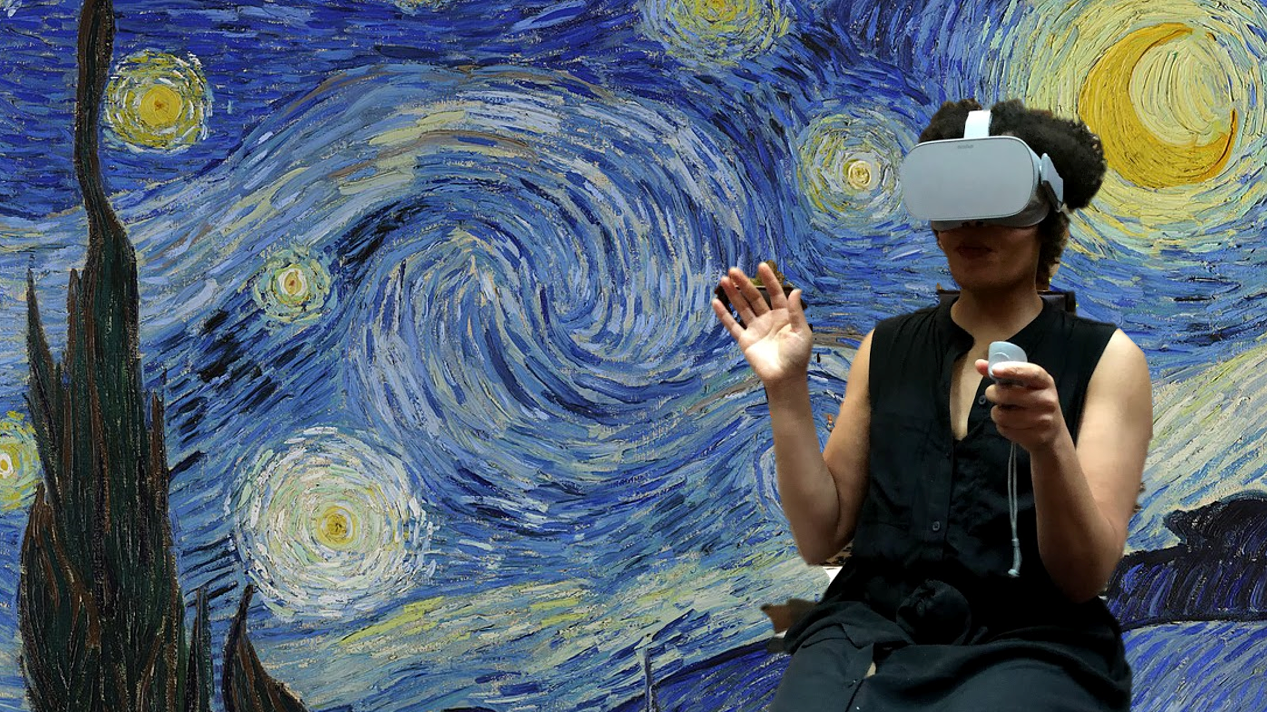Summary

On Tuesday, March 14th, I hosted a webinar with Chancey Fleet titled, “Live Audio Descriptions for 360-Degree Video: Best Practices.” The webinar gave Chancey and I an opportunity to share our research on audio descriptions (AD) for immersive media, and start a conversation with the wider accessibility community about where to go from here.
Our Research
The primary question we posed was this: Under what circumstances could there be a benefit to having a live audio describer for content that was not originally designed with accessibility in mind? Could a live audio describer be useful for remediation? To begin answering these questions, we conducted research with the help of Blind volunteers at Data & Society and the Georgia Libraries for Accessible Statewide Services. Three different immersive experiences were presented to volunteers, along with a different type of AD for each one. Afterward, volunteers were given an opportunity to rate their experiences and share feedback with us.
Video Highlights
- National Geographic Great Hammerhead Shark Encounter
- The Starry Night (Optimal Path)
- Anne Frank House VR (Freedom of Choice)
- Anne Frank House VR (Control of Movement)
Q&A
Because feedback has been so essential to this project, we were very interested to hear what sort of questions the webinar attendees might have for us during the Q&A. They did not disappoint: We fielded questions for over 20 minutes!
One attendee asked us if developers have considered giving users a virtual white cane, or guidance from O&M instructors. Chancey said that if we — Blind people — are going to do any virtual navigation in a virtual space, then we’ll need haptic feedback from a controller that could simulate a cane. And so, it would have to be fairly light, precise, and deliver a range of different convincing haptic sensations. She mentioned that some work has been done on this, and told people to check out Canetroller, a proof-of-concept that’s “not totally there yet.” In terms of guidance from O&M instructors, Chancey said that she would prefer to experience a virtual environment without one, but if the circumstances involved skill development then she might be open to it.
Joel Snyder is the founder of ACB’s Audio Description Project, and a true pioneer in the audio description field. During the Q&A, he asked if we had considered the quality of the voicing for our AD. I replied that while I am an accessibility specialist, I am not a professional voice actor, and the AD might have felt more immediate and conversational to people if it had been performed by a skilled thespian. Chancey added that interactive description, by its nature, is better when there’s rapport. The describer doesn’t need to perform a conversational tone if what they’re doing is literally conversational.
Additional Resources
Attendees also shared some helpful resources in the chat:
- Research prototype of a haptic and auditory white cane controller
- ImAc’s research on audio description in 3D audio
- “Virtual Barber Shop Haircut” (Holophonic Sound)
- “Sound of Silence” (3D Binaural Audio)
When you think about audio descriptions for immersive media, what are your questions? We might have addressed them in the webinar, but maybe not. Check out the webinar for yourself, and send us your thoughts.
One comment:
Comments are closed.